Butterflies and Moths
Media
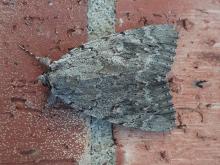
Species Types
Scientific Name
Catocala spp., more than 100 species in North America north of Mexico
Description
Dozens of species of underwing moths (genus Catocala) live in Missouri. They have drab tan forewings that usually conceal bright orange, red, yellow, or pink hindwings with contrasting bold dark patterns.
Media

Species Types
Scientific Name
About 50 species recorded from Missouri
Description
Prominent moths have a heavy covering of scales, so many of them look fuzzy. Some species curl their wings around their abdomens, which are lifted at an angle, so they resemble a twig.
Media

Species Types
Scientific Name
Haematopis grataria
Description
The colorful chickweed geometer moth flies during the day like a butterfly. It’s called a geometer (“earth measurer”) because the larvae are “inchworms” that loop their bodies with each “step” they take.
Media

Species Types
Scientific Name
Nemoria bistriaria
Description
The red-fringed emerald has two color forms depending on the season. Adults that emerge in summer are green, but those that emerge in spring are tan.
Media
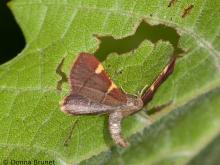
Species Types
Scientific Name
More than 680 species in North America north of Mexico
Description
The pyralids are a large and diverse family of mostly small or medium-sized moths. They often look like they have snouts.
Media
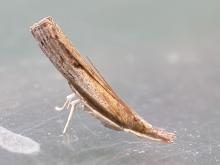
Species Types
Scientific Name
More than 860 species in North America north of Mexico
Description
Crambid snout moths are named for the mouthparts that project outward like a snout. They are very similar to the closely related family of pyralid moths.
Media
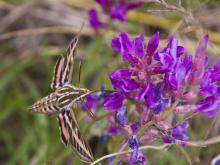
Species Types
Scientific Name
More than 50 species in Missouri
Description
Sphinx moths are usually large and heavy bodied, with a long, pointed abdomen. Members of this family often hover near flowers, feeding on nectar and looking like hummingbirds or bumblebees.
Media
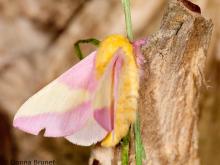
Species Types
Scientific Name
Dryocampa rubicunda
Description
The rosy maple moth has a variable coloration. In most cases, it is white or cream-colored, with some amount of pink at the outer and inner portions of the wings.
Media

Species Types
Scientific Name
Amphion floridensis
Description
The Nessus sphinx is a common Missouri moth. It hovers near flowers, collecting nectar, during the day and at dusk. The caterpillars eat plants in the grape family, including Virginia creeper.
Media

Species Types
Scientific Name
Hyles lineata
Description
The white-lined sphinx moth sometimes confuses people because it flies, hovers, and eats from flowers like a hummingbird. The adults often fly during daylight hours as well as in the night and are often found at lights.
See Also


Media

Species Types
Scientific Name
About 1,500 species in North America north of Mexico
Description
Adult caddisflies are mothlike. Their larvae are aquatic and build portable, protective cases out of local materials, including grains of sand, bits of leaves and twigs, and other debris.
Media

Species Types
Scientific Name
Corydalus cornutus
Description
Adult eastern dobsonflies are huge and mothlike, with large wings and a weak, fluttery flight. The fiercely predaceous aquatic larvae, called hellgrammites, are well-known to anglers, who often use them as bait.
About Butterflies and Moths in Missouri
Butterflies, skippers, and moths belong to an insect order called the Lepidoptera — the "scale-winged" insects. These living jewels have tiny, overlapping scales that cover their wings like shingles. The scales, whether muted or colorful, seem dusty if they rub off on your fingers. Many butterflies and moths are associated with particular types of food plants, which their caterpillars must eat in order to survive.





















